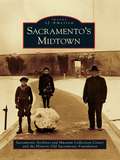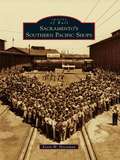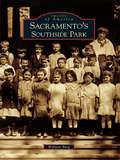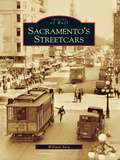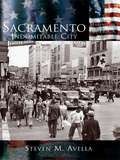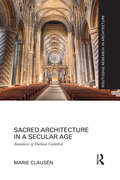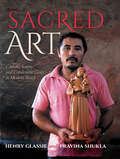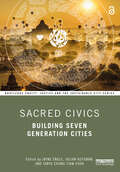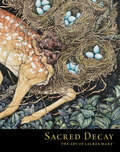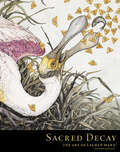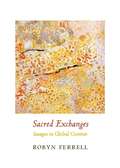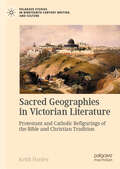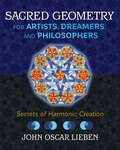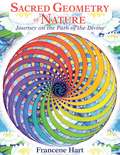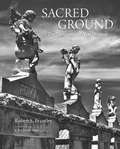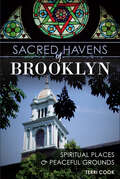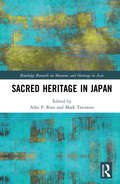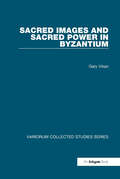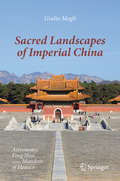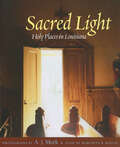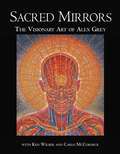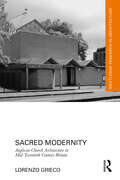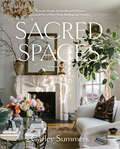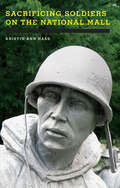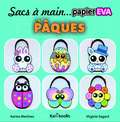- Table View
- List View
Sacramento's Midtown
by Historic Old Sacramento Foundation Sacramento Archives and Museum Collection CenterAs Sacramento's neighborhoods grew eastward from Fifteenth Street to Thirty-first Street (later Alhambra Boulevard), the area evolved into a complex mix of housing and businesses known as Midtown. Sutter's Fort was still popular, and community groups like the Native Sons of the Golden West restored its last remnants for future generations. In 1927, the city built Memorial Auditorium, a tribute to fallen soldiers, as a large central venue that continues to serve as an important setting for graduations, concerts, and conventions. The J and K Street business corridors expanded from downtown, and identifiable neighborhoods such as Poverty Ridge, Boulevard Park, and New Era Park developed as people settled and established businesses in these growing areas. Today's Midtown supports numerous Victorian mansions and Craftsman bungalows, as well as the legacies of such employers as the California Almond Growers' Exchange, California Packing Corporation, Buffalo Brewery, Sutter Hospital, and the Sacramento Bee newspaper.
Sacramento's Southern Pacific Shops
by Kevin W. HectemanIn 1862, the Central Pacific Railroad was founded and began building eastward from Sacramento as part of the transcontinental railroad. This required a shop capable of keeping the railroad's equipment in running order. So in 1867, in the swamps just north of town, the Sacramento shops were born. For well more than a century, this massive complex kept the Central Pacific and its corporate successor, the Southern Pacific, operating smoothly. For many decades, the shops were the largest employer in the Sacramento area, employing carpenters, painters, draftsmen, boilermakers, electricians, clerks, upholsterers, and others. The shops' forces designed, built, and maintained locomotives, freight and passenger cars, and other railroading equipment. The complex closed in 1999. Most of the area, popularly known as the Railyards, is set for redevelopment. The California State Railroad Museum handles maintenance and restoration of its collection in two of the shops buildings and plans to develop a Railroad Technology Museum on the site.
Sacramento's Southside Park
by William BurgSacramento's Southside Park neighborhood sits south of California's state capitol and north of the Old City Cemetery. Built on a former slough, it was inhabited by generations of immigrants and working-class families. The neighborhood's many ethnic communities, including Portuguese, Italian, Mexican, and Japanese, came together in Southside Park, the neighborhood's namesake. Whether for fireworks displays on the Fourth of July, for a trip back to Gold Rush days at Roaring Camp, or simply to paddle the lake in a rented boat, Southside Park provided a place of respite and recreation in this bustling city. The neighborhood surrounding the park faced many challenges as Sacramento grew--including freewayconstruction, urban renewal and redevelopment, and problems with crime--but its residents faced these challenges with a tradition of political activism, community participation, and a strong sense of civic pride that is still evident today.
Sacramento's Streetcars
by William BurgUntil 1947, Sacramento's streetcars linked a bustling downtown district with residential neighborhoods, workplaces, and a growing series of suburbs. Starting with horse-drawn cars on Front Street, the streetcar system owned by the Pacific Gas and Electric Company expanded to include Midtown, Curtis Park, Land Park, Oak Park, and East Sacramento. But PG&E was not alone; two other companies ran streetcar routes downtown, along with suburban lines to West Sacramento, North Sacramento, Rio Linda, Elverta, Colonial Heights, and Colonial Acres. Sacramentans rode the cars to work, to school, to the state fair, and just about anywhere they wanted to go until the streetcars were replaced by buses owned by National City Lines.
Sacramento: Indomitable City
by Steven M. AvellaBorn of a country's collective desire for riches, Sacramento was resolute in its survival while other Gold Rush towns faded into history. It battled catastrophic fires, floods, and epidemics to become the original western hub and laid claim to the capital of a state that would one day have the world's fifth largest economy. The community's flourishing growth is not just a product of its economic viability, but a direct result of the cultural vibrance and fortitude of a diverse populace that remains the backbone of our country's most dynamic state.
Sacred Architecture in a Secular Age: Anamnesis of Durham Cathedral (Routledge Research in Architecture)
by Marie ClausénHaving won more than one recent poll as Britain’s best-loved building, the appeal of Durham Cathedral appears abiding, which begs the question whether an iconic sacred building can retain meaning and affective pertinence for contemporary, secular visitors. Using the example of Durham Cathedral, this book sets out to explore wherein the appeal of historic churches lies today and considers questions of how and why their preservation into a post-Christian era should be secured. <P><P>By including feedback from visitors to the cathedral, and the author’s own very personal account of the cathedral in the form of an ekphrasis, this work seeks to privilege an interpretation of architecture that is based on the individual experience rather than on more conventional narratives of architecture history and cultural heritage policy. Recognising the implication of our choice of narrative on the perceived value of historic churches is crucial when deliberating their future role. <P><P>This book puts forth a compelling case for historical sacred architecture, suggesting that its loss - through imperceptive conservation practices as much as through neglect or demolition - would diminish us all, secularists, atheists and agnostics included.
Sacred Art: Catholic Saints and Candomblé Gods in Modern Brazil
by Henry Glassie Pravina ShuklaSacred art flourishes today in northeastern Brazil, where European and African religious traditions have intersected for centuries. Professional artists create images of both the Catholic saints and the African gods of Candomblé to meet the needs of a vast market of believers and art collectors.Over the past decade, Henry Glassie and Pravina Shukla conducted intense research in the states of Bahia and Pernambuco, interviewing the artists at length, photographing their processes and products, attending Catholic and Candomblé services, and finally creating a comprehensive book, governed by a deep understanding of the artists themselves.Beginning with Edival Rosas, who carves monumental baroque statues for churches, and ending with Francisco Santos, who paints images of the gods for Candomblé terreiros, the book displays the diversity of Brazilian artistic techniques and religious interpretations. Glassie and Shukla enhance their findings with comparisons from art and religion in the United States, Nigeria, Portugal, Turkey, India, Bangladesh, and Japan and gesture toward an encompassing theology of power and beauty that brings unity into the spiritual art of the world.
Sacred Civics: Building Seven Generation Cities (Routledge Equity, Justice and the Sustainable City series)
by Jayne EngleSacred Civics argues that societal transformation requires that spirituality and sacred values are essential to reimagining patterns of how we live, organize and govern ourselves, determine and distribute wealth, inhabit and design cities, and construct relationships with others and with nature. The book brings together transdisciplinary and global academics, professionals, and activists from a range of backgrounds to question assumptions that are fused deep into the code of how societies operate, and to draw on extraordinary wisdom from ancient Indigenous traditions; to social and political movements like Black Lives Matter, the commons, and wellbeing economies; to technologies for participatory futures where people collaborate to reimagine and change culture. Looking at cities and human settlements as the sites of transformation, the book focuses on values, commons, and wisdom to demonstrate that how we choose to live together, to recognize interdependencies, to build, grow, create, and love—matters. Using multiple methodologies to integrate varied knowledge forms and practices, this truly ground-breaking volume includes contributions from renowned and rising voices. Sacred Civics is a must-read for anyone interested in intersectional discussions on social justice, inclusivity, participatory design, healthy communities, and future cities.
Sacred Decay: The Art of Lauren Marx
by Lauren MarxFungus blooms and dies, bones weather, and moths form halos around dismembered animals in this darkly exquisite collection from acclaimed artist Lauren Marx.With an impressive eye for detail, Marx brings her uncanny subjects to life - or death - with awe-inspiring texture and intensity. Birds, beasts, fish, plants, and more blossom radiantly on the page in their cycle of birth and destruction. Celebrated artist Lauren Marx's first collection highlights work from her latest gallery show and more, with over 120 pages of full-color art. Don't miss this stunning digital book!
Sacred Decay: The Art of Lauren Marx (Second Edition)
by Lauren MarxA stunning depiction of visceral truth: This second edition of the celebrated art book by Lauren Marx includes a new cover, an expanded sketchbook section, and a new introduction by the artist.Fungus blooms and dies, bones weather, and moths form halos around dismembered animals in this darkly exquisite collection from acclaimed artist Lauren Marx, now celebrated in a second edition! With an impressive eye for detail, Marx brings her uncanny subjects to life—or death—with awe-inspiring texture and intensity. Birds, beasts, fish, plants, and more unfurl radiantly on the page in their cycle of birth and destruction.This second edition of the celebrated collection features new cover art, an expanded sketchbook section, and an all-new introduction from the artist herself.
Sacred Exchanges: Images in Global Context (Columbia Themes in Philosophy, Social Criticism, and the Arts)
by Robyn FerrellAs the international art market globalizes the indigenous image, it changes its identity, status, value, and purpose in local and larger contexts. Focusing on a school of Australian Aboriginal painting that has become popular in the contemporary art world, Robyn Ferrell traces the influence of cultural exchanges on art, the self, and attitudes toward the other.Aboriginal acrylic painting, produced by indigenous women artists of the Australian Desert, bears a superficial resemblance to abstract expressionism and is often read as such by viewers. Yet to see this art only through a Western lens is to miss its unique ontology, logics of sensation, and rich politics and religion. Ferrell explores the culture that produces these paintings and connects its aesthetic to the brutal environmental and economic realities of its people. From here, she travels to urban locales, observing museums and department stores as they traffic interchangeably in art and commodities. Ferrell ties the history of these desert works to global acts of genocide and dispossession. Rethinking the value of the artistic image in the global market and different interpretations of the sacred, she considers photojournalism, ecotourism, and other sacred sites of the western subject, investigating the intersection of modern art and postmodern culture. She ultimately challenges the primacy of the "European gaze" and its fascination with sacred cultures, constructing a more balanced intercultural dialogue that deemphasizes the aesthetic of the real championed by western philosophy.
Sacred Geographies in Victorian Literature: Protestant and Catholic Refigurings of the Bible and Christian Tradition (Palgrave Studies in Nineteenth-Century Writing and Culture)
by Keith HanleyThis book describes how Christian sacred geographies were represented in Victorian literature. It demonstrates first how those from the Hebrew Bible and the Old and New Testaments had become politically domesticated and psychologically internalised to sustain the Victorian Protestant imaginary in art and literature. It then examines how, following the relocation of the centre of Christendom from Jerusalem to Rome in the Middle Ages, the geographical axis between Rome and Britain had been disrupted during the period of Catholic penalisation but was restored by Emancipation and conversion in the nineteenth century. As a result of these national relocations, a literary atlas of sacred heterotopias, other worlds, was mapped by Protestant and Catholic writers within their industrial-imperialist period. Intended for a primary readership of academics and researchers in the field of Victorian Literature, Religious Studies and History, it focuses on the works of nine writers in a variety of genres, including poetry, novels, art criticism, and historical, literary and theological essays.
Sacred Geometry for Artists, Dreamers, and Philosophers: Secrets of Harmonic Creation
by John Oscar LiebenAn illustrated guide to harmonics--the sacred geometry principles that underlie the natural world--and its practical applications • Demonstrates how the vesica piscis is a matrix from which ideas and forms emanate, connecting cosmic time cycles, measures of space, and musical tones • Provides harmonic analyses of ancient sculpture, architecture, the solar system, the Earth-Moon relationship, and the structure of water and waves • Explains how to apply sacred geometry to create building floor plans, pottery figures, gardens, and sacred ceremonial spaces We are in the midst of a revival of an ancient way of looking at the world--an approach that enabled great civilizations of the past to bring forth inventions of great beauty and power. This school of thought--harmonics--envisioned the natural world and the solar system as an interlocking matrix of harmonious numbers, perfectly woven into the creative fabric of life and the surrounding universe. Exploring the art and science of harmonics, John Oscar Lieben shows how to create harmonious forms using the ancient tools of number, geometry, and musical tone--an approach that resonates with nature’s own ways of creation. He demonstrates many practical applications that result from the study of harmonics, providing analyses of ancient sculpture and architecture, as well as original examples of building floor plans, pottery figures based on planetary proportions, gardens based on harmonic principles, and ceremonial spaces that honor cosmic harmonies and sacred geometric relationships. Showing how harmonics can also be applied to the mysteries of time and space, the author demonstrates how the vesica piscis and many other variations of the vesica shape reveal numerical synchronicities and correspondences that connect cosmic time cycles, measures of space, and musical tones. The author applies harmonics and the “vesica construction” matrix to illustrate many of nature’s wonders, including the Earth-Moon relationship, the interactions of the Golden Number and the musical scale, and how the Flower of Life symbol connects the universal field with the pattern of raindrops falling on a pond. Offering an approach to sacred geometry that pairs the mystical with the practical, the cosmic with the earthly, the author reveals how the art and science of harmonics should be required study for both the artist and the seeker of eternal truths as well as the scientist who seeks an entrance into the sacred foundations of nature.
Sacred Geometry of Nature: Journey on the Path of the Divine
by Francene HartA fully illustrated inspirational art book from visionary painter Francene Hart• Includes more than 80 full-color reproductions of Hart’s intricate watercolor paintings and the stories behind them• Recounts the evolution of her art and her discovery of the hidden order of Nature that led to her masterful artistic integrations of Nature, Spirit, and Sacred Geometry• Explores how to tap into the energies provided by spirit guides and power animals, like Jaguar, Raven, Octopus, and Dolphin, and harness the intelligence of the heart for creative inspiration and visionEvery one of us possesses the potential to receive visionary experiences and integrate them into our lives. Artists become visionaries by cultivating their instinctive creative spark and sharing their profound visions with the world.In this lavishly illustrated memoir, including more than 80 full-color reproductions of her intricate watercolor paintings and the stories behind them, Francene Hart recounts the evolution of her art from formative influences to her masterful integrations of Nature, Spirit, and Sacred Geometry. Opening with her early work on mandalas and her explorations of the work of Joseph Campbell and C. G. Jung, Hart explains how her first works of art were in response to the solitary life she led in the forest, where she discovered the hidden order of Nature. She reveals how she learned to center her artistic explorations on the intelligence of the heart rather than the intellect, utilizing the wisdom and imagery of Sacred Geometry, reverence for the natural environment, and the interconnectedness between all things as her inspirations. She describes the shamanic lessons that accompanied her discoveries and shaped her understanding of sacred relationships with the self, others, and Mother Earth. She explores how to tap into the energies provided by spirit guides and power animals, like Jaguar, Raven, Octopus, and Dolphin, and explains her profound affinity for the ocean, including her discovery of water consciousness in Hawaii. Offering chronicles of her inspiring travels and transformational encounters around the world, Hart shares her experiences at sacred sites in the Amazon, Central America, Egypt, England, Scotland, Paris, Cambodia, and the Himalayas and how these places influenced her art.Exploring what is revealed as inspiration arises, Spirit informs, and vision is transformed into art, Francene Hart’s journey offers a window into the secret order of Nature, the power of sacred symbols for evolving consciousness, and a visionary artistic path that perfectly blends the mathematical rigors of sacred geometry and the numinous.
Sacred Ground: The Cemeteries of New Orleans
by Robert S. BrantleySacred Ground is a sumptuous photographic portrait of New Orleans's legendary cemeteries. Robert S. Brantley celebrates the otherworldly landscapes, intricate ironwork, evocative memorials, and stately monuments as vibrant sites of remembrance. New Orleans history is further revealed through biographies of twenty individuals whose grave sites are among those featured, including entrepreneurs, celebrated musicians, a world-class violin maker, an ex-slave turned minister, a ship's captain, and a young soldier felled by Spanish flu while in basic training for World War I. The rich duotone photographs, organized by cemetery, are followed by an index identifying the tombs and their iconography; an introduction by S. Frederick Starr provides background on New Orleans cemetery history, culture, and burial customs. Sacred Ground provides a stunning exploration of the traditions born of New Orleans's unique religious, cultural, and ethnic diversity.
Sacred Havens of Brooklyn: Spiritual Places and Peaceful Grounds (Landmarks)
by Terri CookDuring the nineteenth century, Brooklyn earned the nickname "Borough of Churches" as thousands settled here and brought their beliefs with them. Spirituality has always been a major part of life for Brooklynites. Peter Stuyvesant established the Flatbush Dutch Church in 1654, and freed slaves worshipped in their sanctuaries since 1766. Fatih Mosque calls Moslems to prayer five times a day, Dorje Ling Buddhist temple fills visitors with peace, and more than 150 temples minister to many branches of Judaism. Spirituality is also visible in historic sites and monuments, from Fort Greene Park's Revolutionary War memorial to a Japanese shrine in Botanic Gardens. Discover some of the more than two thousand havens that have overflowed with people who were determined to prevail in faith and hope in New York's most populous borough.
Sacred Heritage in Japan (Routledge Research on Museums and Heritage in Asia)
by Mark Teeuwen Aike P. RotsSacred Heritage in Japan is the first volume to explicitly address the topics of Japanese religion and heritage preservation in connection with each other. The book examines what happens when places of worship and ritual practices are rebranded as national culture. It also considers the impact of being designated tangible or intangible cultural properties and, more recently, as UNESCO World or Intangible Heritage. Drawing on primary ethnographic and historical research, the contributions to this volume show the variety of ways in which different actors have contributed to, negotiated, and at times resisted the transformation of religious traditions into heritage. They analyse the conflicts that emerge about questions of signification and authority during these processes of transformation. The book provides important new perspectives on the local implications of UNESCO listings in the Japanese context and showcases the diversity of "sacred heritage" in present-day Japan. Combining perspectives from heritage studies, Japanese studies, religious studies, history, and social anthropology, the volume will be of interest to scholars and students who want to learn more about the diversity of local responses to heritage conservation in non-Western societies. It will also be of interest to scholars and students engaged in the study of Japanese religion, society, or cultural policies.
Sacred Images and Sacred Power in Byzantium (Variorum Collected Studies)
by Gary VikanIn these studies Gary Vikan has opened new perspectives on the daily life and material culture of Late Antiquity - more specifically, on icons and relics, and on objects revealing of the world of pilgrimage, the early cult of saints, and marriage. He contextualizes these familiar categories of object in the patterns of belief and ritual extracted from contemporary texts and the objects themselves, in order to understand their meaning within the everyday lives of those by whom and for whom they were made. The studies give a nuanced delineation of the inherently ambiguous boundary between conventional religion and magic, noting repeatedly those instances wherein the two are invoked in the same breath (and by way of the same art object), toward the same end. From this historically constructed matrix of art, belief, and ritual, the author derives an anthropologically defined paradigm of charisma and pilgrimage (applied in one essay, as an intriguing parallel, to deconstructing the world of a contemporary secular "saint," Elvis Presley).
Sacred Landscapes of Imperial China: Astronomy, Feng Shui, and the Mandate of Heaven
by Giulio MagliThis book analyses the magnificent imperial necropolises of ancient China from the perspective of Archaeoastronomy, a science which takes into account the landscape in which ancient monuments are placed, focusing especially but not exclusively on the celestial aspects. The power of the Chinese emperors was based on the so-called Mandate of Heaven: the rulers were believed to act as intermediaries between the sky gods and the Earth, and consequently, the architecture of their tombs, starting from the world-famous mausoleum of the first emperor, was closely linked to the celestial cycles and to the cosmos. This relationship, however, also had to take into account various other factors and doctrines, first the Zhao-Mu doctrine in the Han period and later the various forms of Feng Shui. As a result, over the centuries, diverse sacred landscapes were constructed. Among the sites analysed in the book are the “pyramids” of Xi’an from the Han dynasty, the mountain tombs of the Tang dynasty, and the Ming and Qing imperial tombs. The book explains how considerations such as astronomical orientation and topographical orientation according to the principles of Feng Shui played a fundamental role at these sites.
Sacred Light: Holy Places in Louisiana
by A. J. MeekRenowned photographer A. J. Meek takes the novitiate on an inspired visual journey with eighty-eight color photographs of the interiors of churches and synagogues located in south Louisiana, mostly along the lower Mississippi River valley. Tourists may crowd the famous European cathedrals such as Notre Dame in Paris and Westminster Abbey in London. Yet the splendors of local churches in America all too often remain cloistered and unheralded. Meek's beautiful photographs correct this oversight for Louisiana, a state that features a great many beautiful and long-standing holy places. Often incorporating long exposures and select framing, the images in the first section of Sacred Light encompass altars, chancels, and sanctuaries. The second section contains photographs of statues representing deities, angels, madonnas, and saints, often seen with intense color derived from stained-glass windows or artificial light. Light itself is the subject of the third and last section. In several photographs, light is transformed by a window into a kaleidoscope of color on a wooden pew or pulpit chair. Other times the light seems to radiate a living presence of its own. Additionally, the book includes an essay by Louisiana State University art historian and liturgical space consultant, Marchita B. Mauck. Sacred Light also contains photographs of some of the church and synagogue restoration projects after Hurricane Katrina. Meek relates that the now-famous storm of August 2005 was the shadow he was looking for that defines blessed light. He places emphasis on restoration, not destruction, as a testimony to the resilience of the human spirit.
Sacred Mirrors: The Visionary Art of Alex Grey
by Ken Wilber Carlo Mccormick Alex GreyThis unique series of paintings takes the viewer on a graphic, visionary journey through the physical, metaphysical, and spiritual anatomy of the self. From anatomically correct rendering of the body systems, Grey moves to the spiritual/energetic systems with such images as "Universal Mind Lattice," envisioning the sacred and esoteric symbolism of the body and the forces that define its living field of energy. Includes essays on the significance of Grey's work by Ken Wilber, the eminent transpersonal psychologist, and by the noted New York art critic, Carlo McCormick.
Sacred Modernity: Anglican Church Architecture in Mid-Twentieth Century Britain (Routledge Research in Architecture)
by Lorenzo GriecoThis book examines mid-20th-century Anglican church architecture in Britain, from the 1935 to the 1975, exploring how it was shaped by liturgical changes, social shifts, and artistic influences. It investigates the theoretical foundations of modern Anglican church design and the contributions of various denominations to shared worship spaces.Amidst the rise of research groups, publications, and photographic documentation, the book highlights the subject’s significance in this period. Inspired by the liturgical reformation within the Church of England, it analyzes churches in their urban contexts and the communities they served, revealing the complex interplay between architects, engineers, artists, local authorities, and clergy.The book also addresses post-war church reconstruction, the adaptation of existing buildings, and the integration of new construction technologies. It explores how churches accommodated secular functions alongside sacred spaces to reduce maintenance costs and foster communal identity. As secularization grew—particularly affecting the Church of England—it also considers the transformation of redundant churches into secular venues.Adopting a cross-disciplinary approach, the book situates Anglican church architecture within broader religious, urban, and social contexts, offering a comprehensive perspective for scholars and practitioners alike.
Sacred Spaces: Everyday People and the Beautiful Homes Created Out of Their Trials, Healing, and Victories
by Carley SummersA gorgeous photography collection, featuring home interiors and profiles of the people who have transformed these spaces into sanctuaries, calling you to create your own sacred space &“This book is brimming with heart and healing, and it is a moody, visual feast that will leave you feeling full in the best way possible.&”—Justina Blakeney, designer, author, and founder of JungalowBefore she became an internationally renowned designer and photographer, Carley Summers suffered from alcoholism and addiction, spending nights in jail, the emergency room, and rehab. As someone who celebrates recovery today, she knows firsthand the importance of a warm and inviting home. Summers uses her life experience and her craft to ensure that the homes she photographs and designs are comforting, healing spaces to live and grow in.Sacred Spaces takes readers on a beautifully photographed journey inside fourteen homes, from North Carolina and California to Canada, France, and Morocco, as Summers uncovers the vulnerable stories behind each one: a mother who uses her kitchen to heal her son with food, a woman who found her sanctuary after overcoming childhood abuse, and more. She even offers a tour of her mother&’s home and her own. Along the way, each section identifies a type of space that people have created, including• The Foundational Home, which features those who have created spaces on a solid foundation for a lasting legacy• The Wandering Home, which highlights people who were lost in life, lost in travels, but never lost in their home• The Cathartic Home, which showcases people who realize that when they cannot change the outside world, they can change the inside of their homes to bring comfort through renewal and restorationThis collection is a balm for those seeking refuge in a world fraught with struggle and heartache. Through stories of brokenness, hurt, and healing, Sacred Spaces invites readers to dream of the home that will set them free.
Sacrificing Soldiers on the National Mall
by Kristin Ann HassFor the city’s first two hundred years, the story told at Washington DC’s symbolic center, the National Mall, was about triumphant American leaders. Since 1982, when the Vietnam Veterans Memorial was dedicated, the narrative has shifted to emphasize the memory of American wars. In the last thirty years, five significant war memorials have been built on, or very nearly on, the Mall. The Vietnam Veterans Memorial, the Korean War Veterans Memorial, the Women in Military Service for America Memorial, The National Japanese American Memorial to Patriotism During WWII, and the National World War II Memorial have not only transformed the physical space of the Mall but have also dramatically rewritten ideas about U.S. nationalism expressed there. In Sacrificing Soldiers on the National Mall, Kristin Ann Hass examines this war memorial boom, the debates about war and race and gender and patriotism that shaped the memorials, and the new narratives about the nature of American citizenship that they spawned. Sacrificing Soldiers on the National Mall explores the meanings we have made in exchange for the lives of our soldiers and asks if we have made good on our enormous responsibility to them.
Sacs à main en papier mousse EVA : Pâques
by Karina RamirezCréez d’incroyables sacs à main en papier mousse EVA ! Le livre Sacs à main en papier mousse EVA : Pâques va vous montrer étape par étape comment créer d’incroyables sacs à main en papier mousse EVA avec différents personnages. Apprenez la technique sans problème grâce au processus expliqué de A à Z afin que vous puissiez fabriquer autant de sacs que vous le souhaitez. Ce livre est un excellent allié dans toutes sortes de situations : Vous pouvez fabriquer ces sacs à main originaux pour vos amis, votre famille ou vos connaissances. Vous pouvez ajouter des bonbons ou d’autres petites surprises afin de créer un cadeau original pour un anniversaire, un mariage, Pâques, Noël, Halloween, une première communion, un baptême ou d’autres événements. Passez un super moment avec vos enfants en leur expliquant les étapes qu’ils doivent suivre pour créer un sac à main. Vous pouvez être fier que vos enfants achèvent un sac à main si drôle et si mignon. Préparez des activités extrascolaires avec vos enfants et apprenez-leur la valeur de la créativité, de la responsabilité et du travail artistique. Un livre pour un incroyable divertissement en famille ! ***Tous les patrons sont inclus dans le livre.***
